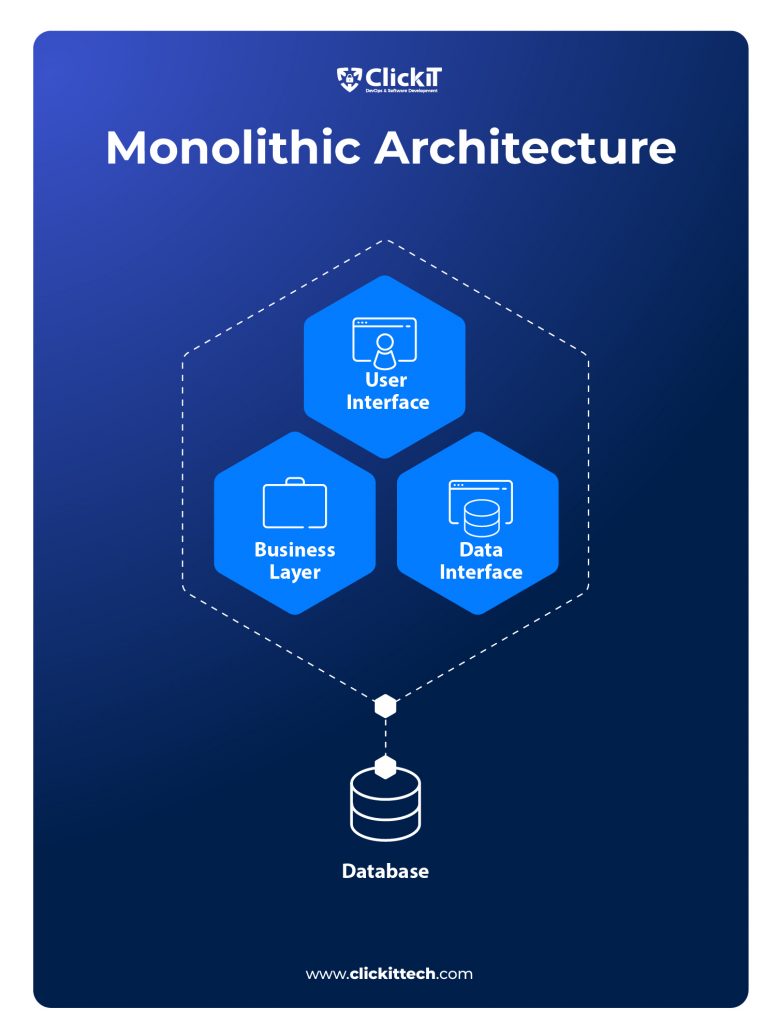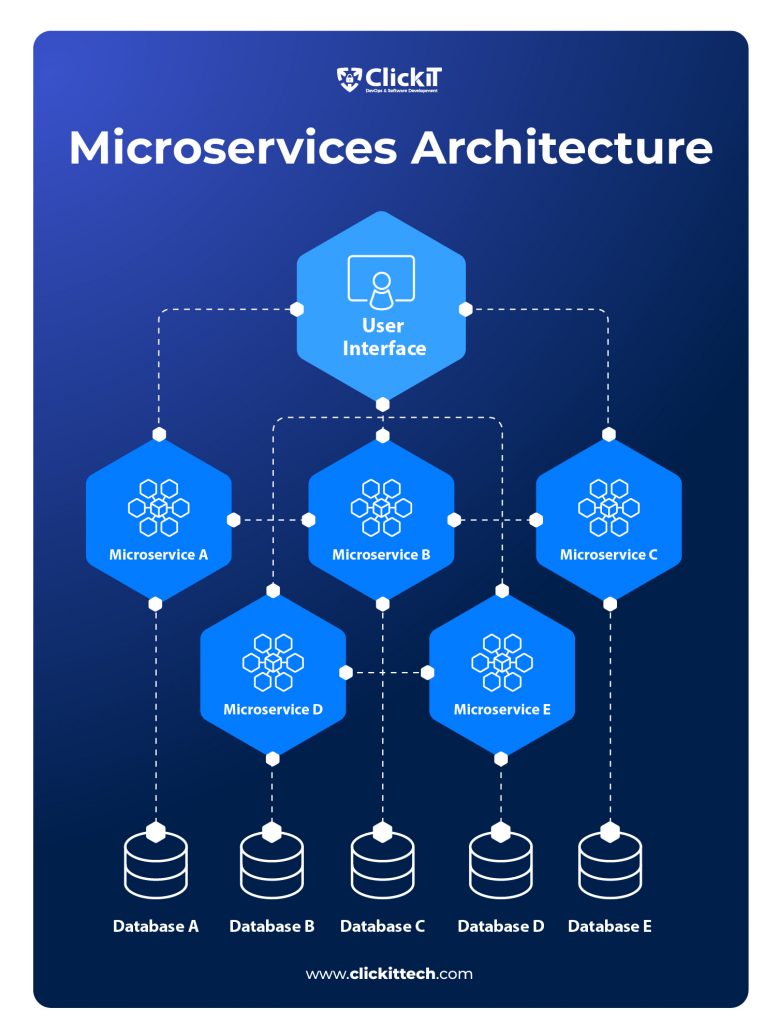Have you ever wondered why certain large tech companies constantly release new products while others find it difficult to update their software? It’s because they innovatively build their software. Traditional methods are slow and solid, like old cars. But there’s a new and exciting way called Microservices Architecture that’s like a fast and adaptable sports car. And if you want to drive it smoothly, you need to follow some rules known as Microservices Best Practices.
Imagine a scenario where your software can scale without difficulty, gracefully recover from errors, and instantly adjust to changing user needs. Microservices makes that world real; it is not science fiction. But to harness this transformative power, you need more than just the right tools. You need a roadmap, guiding principles, best practices, and a clear understanding of the landscape.
So, are you prepared to learn about microservices and their best practices? I explain twelve key best practices for successfully implementing and managing microservices, covering single responsibility, asynchronous communication, API design, data management, security, containerization, automation, monitoring, and cultural considerations. This guide, emphasizing these crucial principles, guides understanding and adopting microservices effectively.
- Microservices Best Practices Summary
- Understanding Monolithic and Microservices Architectures
- Microservices Best Practices
- Conclusion
- Microservices Best Practices FAQ
Microservices Best Practices Summary
| Sr. No. | Microservices Best Practices | Tips |
| #1 | Evaluate Whether Microservices Architecture Best Fits The Requirements | Examine whether Microservices fit with the complexity, scalability, and team organization of your project before getting started. |
| #2 | Single Responsibility Principle | To retain simplicity and ease of management, keep each Microservice concentrated on a single, well-defined task. |
| #3 | Use Asynchronous Communication To Achieve Loose Coupling | To decouple Microservices, use asynchronous communication techniques like message queues. |
| #4 | API First Design | Create your microservices around well-defined APIs to encourage flexible communication. |
| #5 | Have Different Databases Or Data Stores For Each Microservice | To avoid data coupling, isolate the data for each Microservice in its own database or data store. |
| #6 | Include Backward Compatibility For The Service Endpoints You Are Exposing | Examine whether Microservices fit with your project’s complexity, scalability, and team organization before getting started. |
| #7 | Documentation And Communication | To improve collaboration and awareness amongst development teams, prioritize accurate documentation and clear communication. |
| #8 | Secure Microservices For Data Protection | Maintaining backward compatibility will ensure that changes to service endpoints do not negatively affect current clients. |
| #9 | Containerize Your Microservices And Use Orchestration | Microservices should be containerized for portability, and orchestration tools like Kubernetes should be used for scalability and management. |
| #10 | Continuous Integration And Continuous Deployment (CI/CD) | Adopting CI/CD pipelines can help you automate testing and deployment for timely, dependable feature releases. |
| #11 | Use A Centralized Logging And Monitoring System | Implement centralized logging and monitoring tools for issue detection and real-time visibility. |
| #12 | Comprehend The Cultural Shift | Adopting microservices frequently needs a cultural change that emphasizes cooperation, DevOps, and continuous improvement techniques. |
Understanding Monolithic vs Microservices Architectures
Two distinctive paradigms, monolithic architecture and microservices architecture, have emerged in the field of software architecture.
Comprehending these architectural ideas is essential as we dig deeper into Microservices Best Practices. Similar to having a map before setting out on a journey, understanding your starting point (monolithic architecture) and destination (microservices architecture) can help you traverse the path successfully.
So, let’s start by identifying these two essential strategies to set the foundation for our exploration of Microservices Best Practices.
What is Monolithic Architecture?
A traditional method of software design called monolithic architecture involves creating an entire application as a single, tightly connected unit. In this paradigm, the application’s various parts, features, and services are all linked together and dependent on one another. It resembles building a huge, monolithic construction where every component is assembled into a single huge block. Even while monolithic architecture has been used and known for a long time, it does have some drawbacks.

E.g.
Imagine a traditional e-commerce website with a single codebase that tightly integrates the user accounts, shopping cart, and payment processing with the product catalog. It may be necessary to deploy the entire application after any modification or update to one of these components.
What is Microservices Architecture?
Microservices Architecture, in comparison, is a cutting-edge and adaptable method of creating software. According to this paradigm, an application is broken up into a number of tiny, autonomous services, each of which is in charge of a single functional component. These services function independently, much like discrete building pieces that can be put together in different ways. Scalability, agility and the capacity to update and deploy individual components of the application are all facilitated by microservices.

E.g.
Think about Netflix or other modern streaming platforms. Each service, including authentication, video streaming, recommendation engines, and billing, functions separately as a microservice. These microservices communicate using clear APIs, enabling Netflix to adapt and scale each service as necessary without affecting the platform as a whole.
Read our blog for a comprehensive comparison between Microservices vs Monolith Architecture.
Now, before we continue our exploration to discover how to make the most of Microservices Architecture through Microservices Best Practices, it’s essential to answer fundamental questions: When should you consider adopting a Microservices Architecture, and what are the Microservices Architecture Benefits?
When to Consider Microservices?
Choosing to use microservices in software architecture is not a one-size-fits-all option. Before stepping into the world of microservices, it is crucial to assess your project’s particular requirements and characteristics. Understanding when to use this architectural paradigm can have a big impact on the success of your project.
Here are a few key reasons why you can consider using Microservices Architecture.
- Complexity Overload:
If your monolithic application becomes excessively complicated and challenging to manage, it could be time to investigate microservices. A single, tightly linked codebase becomes difficult to maintain as software expands and gains more features. - Demands for scalability:
Microservices can offer a solution if your application faces fluctuating levels of demand for various features or services. By scaling each Microservice individually, you may distribute resources where they are most needed, resulting in increased productivity. - Team Dynamics:
If you have different development teams, each with a unique set of skills, think about using microservices. These teams can operate independently on discrete services thanks to microservices, which promotes autonomy and lowers the coordination burden. - Technology Diversity:
Microservices enable smooth technology mixing and matching when you need the freedom to utilize alternative technologies, languages, or frameworks for different areas of your application. - Frequent upgrades:
Microservices enable autonomous deployment if your project requires quick development cycles and frequent upgrades. This agility is especially crucial when you have to make adjustments quickly to meet client requests or stay one step ahead of the competition. - Independently Deploy New Functionality:
With microservices, you may independently implement new features in particular services without disrupting the overall application. This increases adaptability and quickens the development of new features while maintaining the dependability of current services.
Check out this blog to explore the Microservices Benefits.

Real-World Scenario – A Video Streaming Application
Consider a well-known video streaming service that provides millions of consumers across the globe with a huge selection of films and TV series. User authentication, content recommendations, video playback, and payment processing are just a few of the essential parts of this service.
These components are tightly connected within a single codebase in the traditional monolithic approach, creating challenges with updates and scalability. The application can be changed if someone wants to address these restrictions and take advantage of a Microservices Architecture.
Each Microservice in this new paradigm is responsible for a particular task, such as user authentication, content suggestion, or payment processing. This change promises significant benefits, such as improved scalability, fault tolerance, and quicker development cycles.
Now, let’s explore each of the Microservices Best Practices and how they may be used to enhance this Video Streaming Application for a seamless user experience and quick software development.
Microservices Best Practice #1: Evaluate Whether Microservices Architecture Best Fits The Requirements
Before embarking on your Microservices journey, consider whether this architectural style is appropriate for your project. This is the first and one of the most important Microservices Best Practices to consider.
Consider aspects like the complexity of your project, whether it needs to scale quickly, the dynamics of your development teams, the variety of technologies used, how frequently you need updates, and whether you need independently deployable elements. Avoid adopting the microservices trend just because it’s popular. Analyze your project to find areas where it makes sense to divide it into more manageable, value-driven operations.
Carefully design and evaluate your application to ensure that it can be split into microservices without losing its fundamental functionality.
Example
We should assess whether microservices are appropriate for the video streaming application before proceeding. If we discover that the video streaming service itself doesn’t need frequent updates or scalability, but other components like user authentication and payment processing do, we might consider keeping the video streaming portion as a monolith while implementing microservices for user authentication and payment processing.
Microservices Best Practice #2: Single Responsibility Principle
One fundamental principle to bear in mind when exploring the realm of microservices is to keep them focused and modest. It is referred to as the “Single Responsibility Principle.” This implies that each microservice should handle only one task or responsibility. Why? If a microservice is overloaded with tasks and something goes wrong, it could have a domino effect on the entire system.
Example
In the video streaming application, we can divide out various microservices for specialized tasks per the single responsibility concept. For instance, we may create a Login Service that handles user login alone, a Video Service that handles video playback alone, and a Recommendation Service that concentrates on suggesting content. Each microservice would carry out its specific mission independently.
Microservices Best Practice #3: Use Asynchronous Communication To Achieve Loose Coupling
Microservices frequently communicate with one another using either synchronous or asynchronous methods. Synchronous communication resembles a direct dialogue in which one microservice asks for something and then waits for a prompt reply. Asynchronous communication, on the other hand, resembles mailing a letter with a reply address. In this instance, the sender doesn’t wait for a prompt reply but instead moves on to other responsibilities.
Enhancing flexibility and resilience requires achieving loose coupling between microservices. In contrast to synchronous communication, where microservices interact in real time and wait for prompt responses, this third essential Microservices Best Practice emphasizes asynchronous communication.
Example
We can use asynchronous communication for some video-streaming application tasks to achieve loose coupling between microservices. For instance, when a user uploads a video, the Upload Service can send a message to the Video Processing Service, which will process the video asynchronously rather than waiting for instant processing. This separation of the upload and processing phases increases scalability and reliability.
Microservices Best Practice #4: API First Design
A core principle of microservices architecture is Programming Language Interface (API) First Design. This strategy involves creating clear APIs before implementing the real functionality. It guarantees that your microservices have uniform and transparent communication interfaces, facilitating cooperation and integration between services.
In actual use, API First Design begins with the design of API contracts, which include endpoints, request-response formats, and data models. This design method focuses on the interactions that various microservices will have with one another and with external systems. By defining these contracts up front, development teams can work concurrently, with front-end and back-end developers creating services based on the agreed-upon API requirements.
Example
We can use API First Design to create unambiguous API contracts for our microservices in the video streaming application. We would create request-response formats, data models, and API endpoints for the Recommendation Service that allow users to get personalized recommendations. This strategy ensures that all microservices are created with uniform communication interfaces, which makes it easier to integrate services.
Microservices Best Practice #5: Have Different Databases Or Data Stores For Each Microservice
When using a microservices architecture, it’s crucial to ensure that each microservice has its own unique database or data store. This microservices best practice encourages independence and isolation between services to maintain data consistency and reduce dependencies. Choose the appropriate database, make any necessary adjustments to the infrastructure, and retain it just for your microservice. If all of your microservices use the same database, any changes or outages would affect all of the microservices that use the database, defeating the point.
Example
We can continue to use the convention of having distinct databases for each microservice in the video streaming application. For instance, the Video Service would keep a database for video metadata, the Recommendation Service would have a database for storing user preferences, and the Login Service would have a database for user account information. This division guarantees data separation and minimizes dependencies.
Microservices Best Practice #6: Include Backward Compatibility For The Service Endpoints You Are Exposing
Preserving backward compatibility for service endpoints is crucial as your microservices develop. This guarantees that consumers can take advantage of the most recent improvements while maintaining uninterrupted service for existing users. Maintain backward compatibility as much as possible to prevent your customers from using broken APIs. In spite of our best efforts, software engineers occasionally need to deprecate APIs so we’re not forced to keep using them indefinitely.
Example
We can guarantee backward compatibility for service endpoints as we improve the video streaming service. To guarantee that existing clients continue to work, we can continue to support the previous endpoints even if we add a new API endpoint for video playback. This procedure prevents disruptions for users who might be using earlier versions of our program.
Microservices Best Practice #7: Promote Documentation And Communication
Give documentation and open communication between development teams working on various Microservices a top priority. Keep APIs, dependencies, and integration points’ documentation complete and up to date. Effective communication improves collaboration and awareness among teams, facilitating more efficient development and debugging procedures. Think of it as ensuring that everyone in a team speaks the same language and has access to a shared playbook.
Example
We can prioritize documentation and open communication among development teams in the video streaming application project. For each microservice API, for instance, we could produce thorough documentation that includes endpoints and data models. To ensure efficient development and debugging procedures, we can also arrange regular meetings to discuss integration points and dependencies between microservices.
Microservices Best Practice #8: Secure Microservices For Data Protection
Implement robust security measures to safeguard important data inside Microservices. Security should be a fundamental component of your microservices architecture to prevent data breaches and unauthorized access. Each Microservice should include strong security measures, including encryption of critical data, role-based access controls, and frequent security audits. Customer data is protected following this Microservices Best Practice.
Example
To protect sensitive user data in the video streaming service, we can implement strong security measures within each microservice. For instance, to prevent unauthorized access to user data, the Login Service can use encryption for user credentials, the Payment Service can implement role-based access control, and the Recommendation Service can conduct regular security audits.
Microservices Best Practice #9: Containerize Your Microservices And Use Orchestration
Containerizing microservices with tools like Docker and leveraging orchestration systems like Kubernetes can improve scalability and resource management. This guarantees that our application can effectively allocate resources as required, particularly during times of high usage. With containerized microservices, you may deploy and manage individual services independently without affecting services hosted on other containers. Additionally, containers provide platform independence and interoperability, which perfectly complement the objectives of the microservice design.
Example
The video streaming application can use Docker to containerize microservices, and Kubernetes can be used for orchestration. We can build Docker containers for the login, recommendation, and video services. Kubernetes can then manage these containers, ensuring independent resource allocation and scalability for each service.
You might also enjoy: Serverless vs Containers
Microservices Best Practice #10: Continuous Integration And Continuous Deployment (CI/CD)
A crucial Microservices Best Practice in microservices is Continuous Integration and Continuous Deployment, or CI/CD. Microservice testing, integration, and deployment are automated by CI/CD pipelines, enabling quick and reliable pushes of changes into production. CI/CD tools for pipelines aid in maintaining the integrity of the entire system because each microservice is created and tested independently. These procedures can be automated so that development teams can offer new features and bug fixes quickly, respond to user input immediately, and uphold a high software quality standard throughout the microservices ecosystem.
The key principles of the microservices architecture are well aligned with this Microservices Best Practice, which speeds up development cycles and improves the application’s general agility and responsiveness.
Example
We can set up CI/CD pipelines for each microservice in the video streaming service project. For instance, testing and deployment can be automated via the CI/CD pipeline for the Recommendation Service. As a result, we can update each microservice consistently and quickly, maintaining high software quality and responsiveness to user feedback.
Microservices Best Practice #11: Use A Centralized Logging And Monitoring System
Keeping track of numerous services and their interconnections is difficult yet necessary in a complex microservices architecture. Here is when a central logging and monitoring system is useful. Teams may see the performance and health of their entire system in real time by combining the logs and analytics from all microservices into a single platform.
This practice makes early defect identification, prompt problem-solving, and proactive capacity planning possible. It also makes it easier to audit, comply with regulations, and debug, ensuring that every microservice performs at its best and adds to the application’s overall dependability and stability.
A centralized logging and monitoring solution essentially serves as the active guard of your microservices ecosystem, allowing you to maintain a high level of observability and provide great user experiences.
Example
It will be essential to implement a centralized logging and monitoring system for the video streaming service. We could, for example, combine the analytics and logs from the Login Service, Video Service, and Recommendation Service into one place. This enables us to proactively plan for capacity demands and monitor the performance and health of the entire application in real time.
Microservices Best Practice #12: Comprehend The Cultural Shift
Technology is only one aspect of implementing a microservices architecture; it also involves a significant organizational culture shift. To embrace microservices, it is frequently necessary to break down boundaries between development and operations teams, develop a culture of collaboration, and encourage a shared sense of ownership and responsibility for the entire software ecosystem.
Teams must adopt DevOps practices, emphasizing automation, continuous improvement, and quick feedback loops. This cultural shift involves giving people the freedom to choose, accepting responsibility for their microservices, and continuously pursuing excellence. It also involves accepting change, promoting cross-functional collaboration, and cultivating a culture that encourages innovation and resiliency.
The success of your microservices journey ultimately depends on your ability to comprehend and manage this cultural transition, just as it is important to accept the technical components of microservices.
Example
We can encourage a culture change in our organization to use a microservices design for the video streaming application. For instance, by promoting communication between the development and operations teams, we may create an innovative and continuous improvement-oriented culture. Adopting DevOps practices, emphasizing automation, and allowing teams to take control of their microservices are all part of this cultural revolution.
As our exploration of the world of microservices comes to a close, it’s evident that this architectural strategy has resulted in a new era of software development. We now understand the key elements of microservices and the critical time to consider implementing them. We have also examined microservices’ many advantages, such as enhanced modularity, scalability, and fault separation.
However, the journey doesn’t end here. Implementing Microservices Best Practices is crucial for maximizing their potential.
You may create a solid foundation for your Microservices architecture benefits by determining whether Microservices are the best fit for your requirements, adhering to the Single Responsibility Principle, and embracing techniques like Asynchronous Communication and API-first Design. By using different databases for each Microservice, retaining backward compatibility, and giving documentation and communication top priority, as advocated by Microservices Best Practices, the development process will be streamlined, and collaboration will be improved.
Concentrating on Security, Containerization, and Orchestration, as well as building CI/CD pipelines, Centralized Logging, and Monitoring Systems, will make your microservices ecosystem resilient and flexible. Finally, the success of your Microservices journey depends on your ability to comprehend the Culture Shift towards Collaboration, DevOps, and Continuous Improvement, all of which are emphasized in Microservices Best Practices.
If you’re ready to take the next step in your software development journey, whether it’s implementing Microservices, adhering to Microservices Best practices for a new project, or refactoring your existing monolithic system with Microservices Best Practices in mind, don’t hesitate to reach out to us. We’re here to help you harness the power of Microservices and guide you toward excellence and success.

Microservices Best Practices FAQ
A loosely coupled, independently deployable set of services make up a software application in a microservices architecture when adhering to Microservices Best Practices. In contrast, the development of a complete application as a single, tightly connected unit is the goal of monolithic architecture. Unlike monolithic systems, microservices, especially when following Microservices Best Practices, offer better flexibility, scalability, and ease of maintenance.
Difficulties can include managing inter-service communication, guaranteeing data consistency across services, and increasing operational complexity. Changes to organizational culture and development procedures may also be necessary for microservices.
Continuous integration, continuous deployment (CI/CD), automated testing, and quick deployment of individual services all depend on DevOps practices while developing Microservices. DevOps ensure microservices’ agility and dependability.









